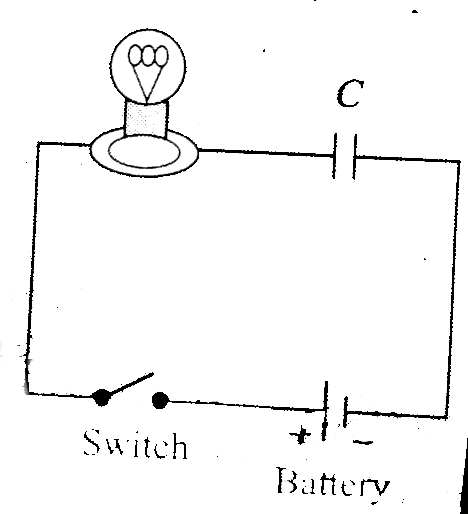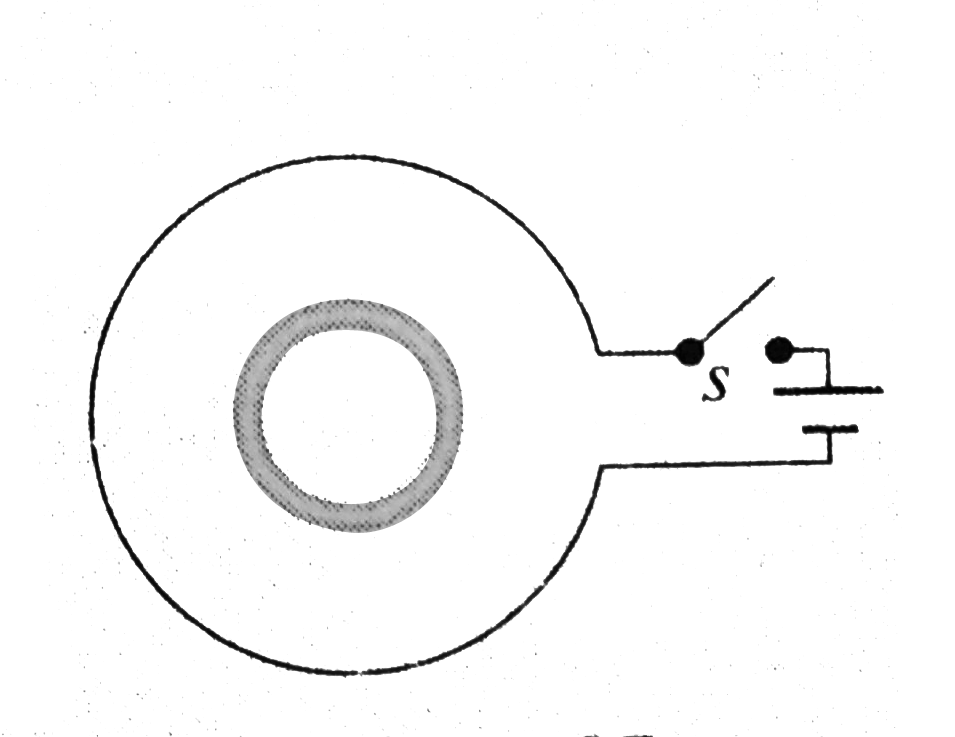When is the higher rate of energy being delivered to a light bulb higher : just after it is turned on, the glow of the filament is increasing, or after it has been on for a few seconds and the glow is steady ?

(a) Just after it is turned on , the energy supplied to the bulb is higher . Becsause initially resistance is low and it increases with the increase in temperature.
(b) After connecting bandc, R2 will be short - circuited . Hence , it will not glow. Now , entire potential difference will be on R1. So brightness of R1 increases.
(c) D is short - circuited, so D will not glow. Potential difference across C is V, so potential difference across each of AandBisV/2. So brightness of C is the greatest and that of AandB are equal.
If A fails, B will not glow. No effect on CandD.
IF C fails , C will not glow. No effect on A,B,andD.
IF D fails , no effect anywhere.
Because resistance is directly proportional to length , at low current and high voltage energy , loss will be less. Because if current is less , then loss of energy I2R will be less.
(e) Initially , current will be high in the circuit , so bulb will glow with maximum possible brightness of the bulb falls and finally the bulb goes out.
(f) This is not true. Because in series, current through all the bulbs is the same. The current is simultaneously set up is series through all the bulbs.
(g) P=V2R=v2Apl
Here, P and V are fixed. We can vary A or l.
Topper's Solved these Questions
- HEATING EFFECT OF CURRENTBOOK - CENGAGE PHYSICS ENGLISHCHAPTER - HEATING EFFECT OF CURRENTEXERCISE - Subjective
8 Videos
- HEATING EFFECT OF CURRENTBOOK - CENGAGE PHYSICS ENGLISHCHAPTER - HEATING EFFECT OF CURRENTEXERCISE - Single Correct
60 Videos
- HEATING EFFECT OF CURRENTBOOK - CENGAGE PHYSICS ENGLISHCHAPTER - HEATING EFFECT OF CURRENTEXERCISE - Solved Examples
13 Videos
- GEOMETRICAL OPTICSBOOK - CENGAGE PHYSICS ENGLISHCHAPTER - GEOMETRICAL OPTICSEXERCISE - Integer Type
4 Videos
- INDUCTANCEBOOK - CENGAGE PHYSICS ENGLISHCHAPTER - INDUCTANCEEXERCISE - Concept Based
8 Videos
Similar Questions
When is the higher rate of energy being delivered to a light bulb higher : just after it is turned on, the glow of the filament is increasing, or after it has been on for a few seconds and the glow is steady ?

View SolutionWhen is more power delivered to a light bulb, just after it is turned on and the glow of the filament is increasing or after it has been ON for a few seconds and the glow is steady?
View SolutionA small, circular ring is inside a larger loop that is connected to a battery and a switch as shown in Fig. 3.25. Use Lenz's law to find the direction of the current induced in the small ring
(a) just after switch S is closed,
(b) after Shas been closed for a long time,
( c) just after S has been reopened after being closed for a long time. ltbr>
View SolutionState whether the resistance of filament of a bulb will decrease, remain unchanged or increase when it glows.
View SolutionA 3.56H inductor is placed in series with a 12.8Ω resistor. An emf of 3.24V is then suddenly applied across the RL combination.
(a) At 0.278s after the emf is applied what is the rate at which energy is being delivered by the battery?
(b) At 0.278s, at what rate is energy appearing as thermal energy in the resistor? (c) At0.278s, at what rate is energy being stored in the magnetic field?
View SolutionThe second ionisation energies are higher than the first ionisation energies. This is mainly due to the fact the after the removal of the first electron, the atom changes into monovalent positive ion. In the ion, the number of electrons decreases but the nuclear charge remains the same. as a result of this, the remaining electrons are held more tightly by the nucleus and it becomes difficult to remove the second electron. therefore, the value of second ionisation energy. (IE2), is greater than that of the first ionisatio energy (IE1). similarly third ionisation energy (IE3) is greater than that of second IE2.
Q. Successive ionisation energy of an atom is greater than previous one, because:
View SolutionThe second ionisation energies are higher than the first ionisation energies. This is mainly due to the fact the after the removal of the first electron, the atom changes into monovalent positive ion. In the ion, the number of electrons decreases but the nuclear charge remains the same. as a result of this, the remaining electrons are held more tightly by the nucleus and it becomes difficult to remove the second electron. therefore, the value of second ionisation energy. (IE2), is greater than that of the first ionisatio energy (IE1). similarly third ionisation energy (IE3) is greater than that of second IE2.
Q. Correct order of ionisation potential of coinage metals is:
View SolutionThe second ionisation energies are higher than the first ionisation energies. This is mainly due to the fact the after the removal of the first electron, the atom changes into monovalent positive ion. In the ion, the number of electrons decreases but the nuclear charge remains the same. as a result of this, the remaining electrons are held more tightly by the nucleus and it becomes difficult to remove the second electron. therefore, the value of second ionisation energy. (IE2), is greater than that of the first ionisatio energy (IE1). similarly third ionisation energy (IE3) is greater than that of second IE2.
Q. IE1andIE2 of Mg metal are 178 and 348 kcal/mol respectively. the energy required for the given reaction is:
Mg(s)→Mg+2+2e−
View SolutionThe second ionisation energies are higher than the first ionisation energies. This is mainly due to the fact the after the removal of the first electron, the atom changes into monovalent positive ion. In the ion, the number of electrons decreases but the nuclear charge remains the same. as a result of this, the remaining electrons are held more tightly by the nucleus and it becomes difficult to remove the second electron. therefore, the value of second ionisation energy. (IE2), is greater than that of the first ionisatio energy (IE1). similarly third ionisation energy (IE3) is greater than that of second IE2.
Q. IE1andIE2 of Mg metal are 178 and 348 kcal/mol respectively. the energy required for the given reaction is:
Mg(s)→Mg+2+2e−
View SolutionThe second ionisation energies are higher than the first ionisation energies. This is mainly due to the fact that after the removal of the first electrons, the atom changes inot mono valent position ion. In the ion, the number of electrons decreases but the nuclear charge remains the same. As a result of this, the remaining electrons are held more tightly by the nucleus and it becomes difficult to remove the second electron . Therefore, the value of second ionisation energy .(IE2) , is greater than that of the first ionisation energy (IE1) . Similarly third ionisation energy (IE3) is greater than that of second IE2.
Successive ionisation energy of an atom is greater than previous one, because
View Solution
